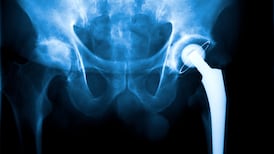Ahead of the new Dáil term, the political party think-ins begin today with Fine Gael’s event. We assess the shape of each party as they head into a general election.
Fine Gael
The senior Government party gathers in Adare, Co Limerick, on Thursday and Friday, with Ministers and TDs hoping to set the tone for the new Dáil term and the long election campaign ahead.
After years of think-ins that were largely boring for all concerned, TDs felt last year’s gathering in Cork was more focused and productive.
This was, at least in part, due to the influence of Mark Mortell, a key Enda Kenny ally, who this year chairs a workshop on campaign planning.
Sessions from Richard Bruton on jobs and Michael Noonan on the economy will also attempt to impress the party message on TDs - namely, that the recovery is not yet secure, expectations for the budget must be managed and Fine Gael is the steady hand on the tiller.
A dip back to the mid-20s in summer opinion polls - explained, perhaps, by a feeling that the recovery is uneven and a general anti-politics atmosphere - halted the recovery in party fortunes that has been underway since Christmas.
The challenge for Fine Gael in the months ahead is to win back the voters who believe that recovery is underway but have yet to see it affect them in their pockets.
Fianna Fáil
Fianna Fáil TDs and Senators meet in the Marine Hotel, Sutton, on Monday and Tuesday next week, in the middle of the Dublin Bay North constituency that has caused Michéal Martin so much trouble, and following the adding of Sean Haughey to the top of the party ticket with Deirdre Heney earlier this week.
The event will include sessions on housing, enterprise and plans for the Dáil term ahead. The election is also expected to feature.
Nationally, Fianna Fáil TDs report they have had a good summer and, unsurprisingly, say they are getting a good reception from voters.
All the party’s TDs are from outside Dublin, however, and Fianna Fáil should compete with Fine Gael in constituencies away from the capital in the election.
Dublin constituencies are the party’s real problem, with Darragh O’Brien in Fingal the only certainty for a seat.
The party’s task in the coming months is to secure its recovery outside Dublin and to try and make gains in the capital.
Policies appealing to urban voters will be hugely important if it is to make inroads.
Labour
Labour members consistently argue that national polls - which have the party hovering between 6 and 9 per cent - overstate its weakness.
In particular, suggestions that they may end up with just one seat after the election draw the ire of party figures , who say that many TDs can hang on in tight constituencies.
The themes for Labour's Wicklow think-in, taking place next Monday and Tuesday, reflect its election priorities: childcare, healthcare, tax reform, supporting workers and making homes affordable.
Election planning and the vote transfer pact with Fine Gael will also be discussed.
By necessity, Labour must differentiate itself from Fine Gael more than it has in the months ahead, while defending its record in Government.
In many ways, the next campaign could be a repeat of the last, with the junior Coalition partner warning of the ghastly things Fine Gael could do in Government if propped up by a motley group of right-wing TDs, or even Fianna Fáil.
It will hope that public sector workers in particular will be receptive to that message.
An emphasis on liberal values could also appeal to middle-class voters who may stick with the party.
Sinn Féin
With clouds hovering over the Northern Assembly and Executive, Sinn Féin will meet in Gormanston, Co Meath on Friday.
The party will undoubtedly make huge gains at the next election and can be expected to significantly increase its number of seats in the next Dáil, with a haul in the high 20s a realistic target.
They currently have 14 TDs, and may even win 30 or more on a very good election day.
Despite that, there is a sense across all parties and among Independents - the other big power bloc in the election - that the party has flatlined in recent months.
TDs say their momentum has slowed since the Maíria Cahill controversy and it is likely party strategists would settle for a result that had Sinn Féin polling in the high teens, with a yield of seats touching the 30 mark.
The party’s task before the election is to make sure it reaches its potential on polling day and sees off possible challenges from those on the hard left.
Its think-in will focus on the North and fighting austerity.








